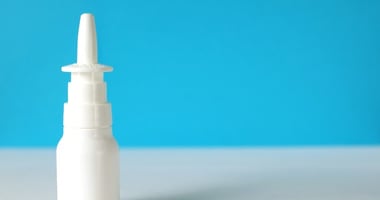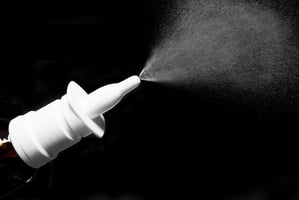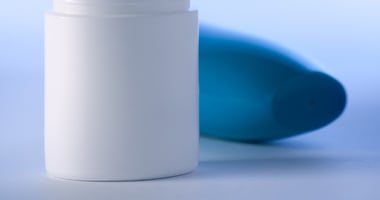In patients with treatment-resistant depression who responded to intranasal esketamine plus an...
Intranasal Esketamine Found Effective in Rapid Reduction of Depression, Suicidal Thoughts
 |
“This is a significant and important study because it provides early evidence demonstrating that esketamine produces antidepressant effects greater than that found with intensive standard of care approaches over the first hours and days of treatment in patients believed to be at imminent risk of suicide requiring hospitalization,” study co-author Gerard Sanacora, M.D., Ph.D. (pictured at left), told Psychiatric News. “If confirmed, this type of rapid onset antidepressant effect could potentially shorten hospital stays or possibly even allow patients to avoid hospitalization altogether and more rapidly return to their normal lives.”
In the study, sponsored by Janssen Research and Development LLC, 68 patients with a diagnosis of major depressive disorder were randomly assigned to receive esketamine (84 mg) or placebo twice weekly for four weeks. Candidates were screened shortly after presenting to an emergency department or an inpatient psychiatric unit in the previous 24 hours and found to be in clinical need of acute psychiatric hospitalization due to imminent risk for suicide.
The study participants were asked about depressive symptom severity (using Montgomery-Åsberg Depression Rating Scale, or MADRS) before receiving their initial dose of ketamine or placebo as well as four and 24 hours later. Depressive symptoms were reassessed at each follow-up visit during the study. Clinicians were also asked to evaluate the suicide risk of the study participants throughout the trial (using the Suicide Ideation and Behavior Assessment Tool).
Throughout the trial, patients in both groups received optimized standard-of-care antidepressant medication.
A significantly greater improvement in MADRS score was observed in the esketamine group compared with the placebo group at 4 hours and at 24 hours. Significantly greater improvement was also observed in the esketamine group on the MADRS suicidal thoughts item score at 4 hours. Additionally, a significantly greater proportion of patients in the esketamine group achieved resolution of suicide risk 24 hours after the first dose, as defined by a clinical global judgment of suicide risk score of 0 to 1. This finding is consistent with results of a recently published meta-analysis of intravenous ketamine, which reported similar differences in ketamine compared with control agent in the proportion of patients without suicidal ideation one day after dosing.
At one month, patients in both the treatment and placebo arms had met remission criteria, defined as a MADRS score of 12 or less, but the statistically significant advantage over placebo disappeared for esketamine on measures both of depressive symptoms and suicidality at Day 25.
“If positive, longer-duration results emerge for intranasal esketamine, it is possible that this treatment will help a significant number of patients who do not respond adequately to existing antidepressant therapies,” AJP Editor Robert Freedman, M.D., and members of the AJP Editorial Board wrote in an accompanying editorial.
Ketamine has been used recreationally as a “party” drug, and the authors added that safeguards need to be established against the risk of abuse. “The FDA and the pharmaceutical companies marketing ketamine have the primary ability to control how the drug is distributed and in what circumstances it can be used, but input from psychiatrists and other interested professional groups as well as the Centers for Disease Control and Prevention and the National Institute on Drug Abuse, should inform the development of effective controls.”
For more information, see the Psychiatric News article “Cautious Optimism' Marks Outlook for Ketamine, Mood Disorders.”
(image courtesy of Gerard Sanacora, M.D.)





